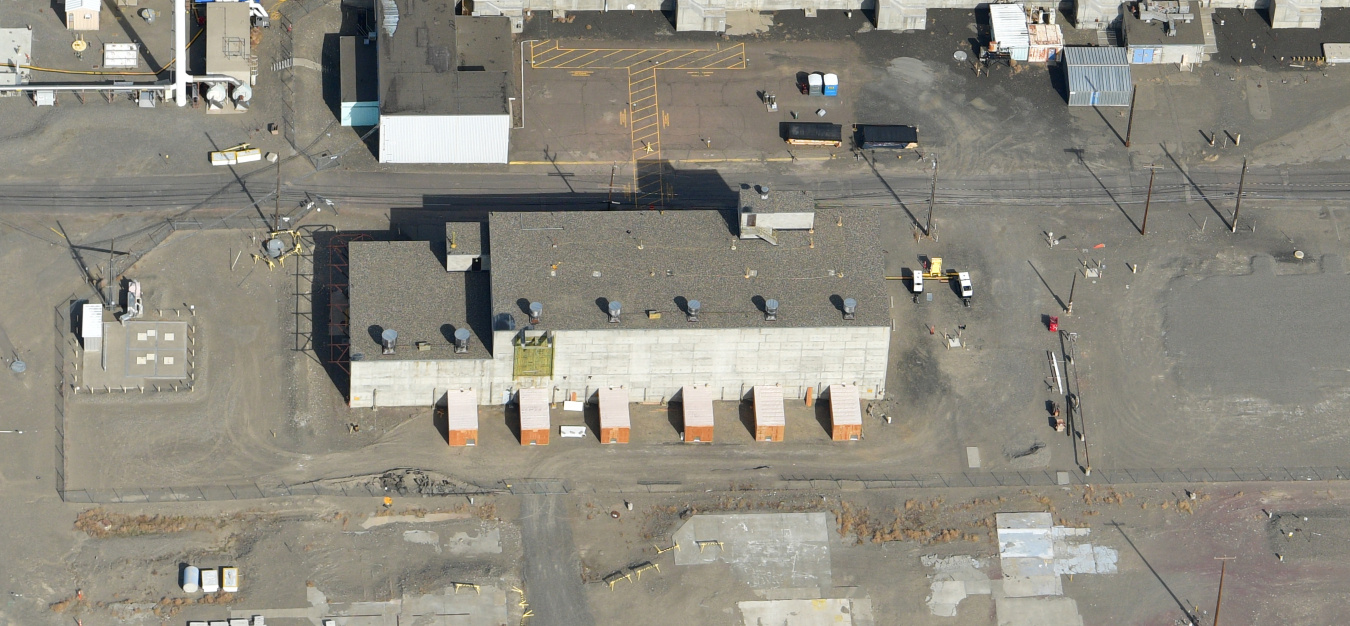Crews with EM Richland Operations Office (RL) contractor Central Plateau Cleanup Company (CPCCo) are preparing the 224-B Plutonium Concentration Facility on the Hanford Site for demolition.
Office of Environmental Management
November 22, 2022
Constructed in 1944, the 224-B Plutonium Concentration Facility is one of the oldest buildings on the Hanford Site. The facility worked in conjunction with B Plant to support plutonium production activities until 1952. One of Hanford’s earliest plutonium processing facilities, B Plant operated from 1945 through 1957.
RICHLAND, Wash. – Crews with EM Richland Operations Office (RL) contractor Central Plateau Cleanup Company (CPCCo) are preparing the 224-B Plutonium Concentration Facility on the Hanford Site for demolition.
Last summer workers entered the facility process cells — where irradiated uranium fuel rods were processed to extract plutonium — for the first time since the mid-1980s, to remove debris. Teams are using noninvasive methods, like ultrasonic testing, to safely characterize any potentially hazardous material inside tanks and piping in the six cells.
“Making our first entries into the process cells and beginning preliminary characterization and cleanup activities is a big step in safely advancing this complex project,” said Andy Wiborg, RL Projects and Facilities Division team lead for Hanford’s Central Plateau Cleanup Project.
Workers with EM contractor Central Plateau Cleanup Company entered former process cells — where irradiated uranium fuel rods were processed to extract plutonium — in the 224-B Plutonium Concentration Facility on the Hanford Site last summer. It was the first time in nearly four decades crews had entered the cells.
Constructed in 1944, 224-B is one of the oldest buildings located in the central part of the site. The facility worked in conjunction with B Plant to support plutonium production activities until 1952. The tanks and piping in the process cells were flushed in the mid-1970s, and the characterization will determine if there is any remaining solid or liquid waste that workers need to remove before demolition begins.
Navigating the congested process cells can be difficult for workers. Most of the cells contain multiple tanks — some as large as 9 feet tall and 9 feet in diameter — and a labyrinth of piping.
“This project presents a lot of unique challenges, but we’re making good, safe progress by relying on our training, communicating and looking out for each other,” said Jeremy Hulquist, CPCCo project manager. “Extensive research and detailed planning went into preparing for this cleanup project; it’s definitely a team effort.”
After completing characterization, the team will begin removing the equipment. The building is expected to be ready for demolition by the end of 2024.
To receive the latest news and updates about the Office of Environmental Management, submit your e-mail address.

